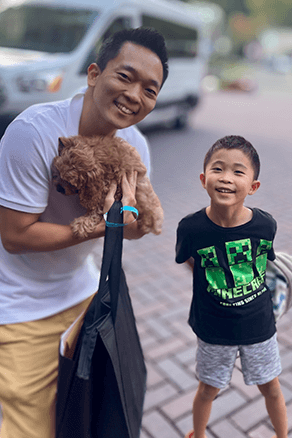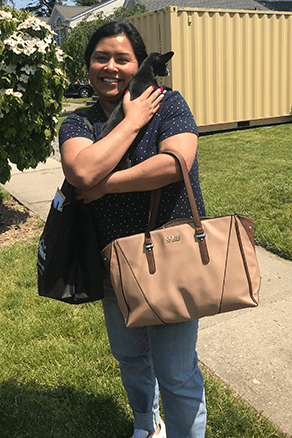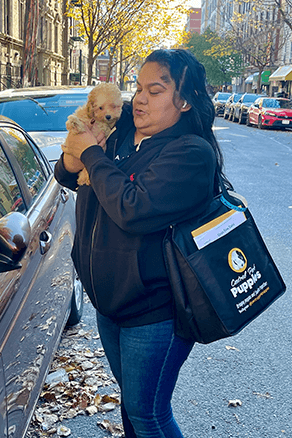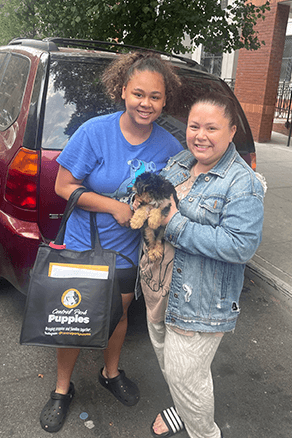Welcoming a new puppy into your home is a joyous occasion, but it comes with the responsibility of ensuring a safe and secure environment for your furry friend. Puppy-proofing is an essential step in creating a conducive and hazard-free space for your canine companion to thrive. In this comprehensive guide, we'll take you through each room, offering invaluable tips and insights on puppy-proofing, starting with essential general tips and then diving into specific room-by-room recommendations.
1. General Tips: The Essentials of Puppy-Proofing
Before we embark on the room-by-room guide, it's crucial to establish a solid foundation by addressing the essentials of puppy-proofing. These general tips set the stage for creating a safe environment tailored to your puppy's needs.
Start with the Essentials
Identify potential hazards such as toxic plants, electrical cords, and choking hazards within your home. Remove or secure these items to prevent accidents and injuries, establishing a proactive approach that not only ensures a safer living space for your pup from the start but also promotes a stress-free and happy environment conducive to their well-being. By taking these preemptive measures, you create a foundation for a harmonious relationship, allowing your puppy to explore and thrive in a secure and loving home.
Consider Puppy Age and Breed
Adapt puppy-proofing strategies based on your dog's age and breed, tailoring care to their specific needs. Small pups need specialized nutrition and a safe environment, while large pups require controlled diets and careful exercise. Energetic breeds benefit from mental stimulation and vigorous exercise, while calm breeds thrive in a quieter environment with gentler training.
2. Room-by-Room Tips:
Living Room:
The living room is often the heart of the home and a favorite space for both families and their furry friends. Here are specific puppy-proofing tips for this central area.
Curtain Cord Chaos:
Curtain cords pose a potential hazard for puppies as they may be tempted to chew on them, leading to the risk of ingestion or strangulation. Puppies, in their curious nature, may become entangled in curtain cords while exploring, causing accidents and injuries. To ensure the safety of your puppy, it's advisable to use cord shorteners or secure cords out of reach to prevent any potential harm.
Coffee Table Temptations:
Puppies may be drawn to items on low coffee tables. It is important to move fragile items to higher surfaces and secure tablecloths to prevent accidental pulls.
Toybox Troubles:
Encourage responsible play by the storage of chew toys in accessible containers. This keeps the living room tidy and ensures your puppy has easy access to safe playthings.
Kitchen:
The kitchen, with its enticing scents and potential hazards, requires careful attention when puppy-proofing.
Trash Can Tamer:
Ensure to secure the trash can, such as locking lids, using high bins, or keeping it in a closed cabinet. This prevents scavenging and potential messes.
Countertop Crumbles:
Puppies may be tempted to explore kitchen countertops. Keep food out of reach and maintain clean surfaces regularly to reduce the likelihood of accidental ingestion.
Cleaning Caution:
Storing toxic chemicals in low cabinets poses a significant danger, especially in households with pets, as they can easily access and ingest these hazardous substances. To mitigate this risk, it is crucial to move such items to higher, secure locations, ensuring the safety of your furry companion by eliminating the potential for accidental ingestion.
Bedroom:
Puppy-proofing your bedroom involves securing loose cords and small objects that could be chewed or swallowed, as well as ensuring there are no accessible electrical outlets. Keep valuable items out of reach, and provide safe chew toys to redirect your puppy's natural urge to explore and teethe.
Open Door Dangers:
An open bedroom door may lead your curious puppy into potentially hazardous areas. Use baby gates or close doors firmly to limit access and keep your puppy safe.
Shoebox Symphony:
Puppies often find shoes irresistible. Put shoes away in closets or containers to prevent chewing and potential damage.
Cozy Crate Haven:
Crate training is crucial for providing your dog with a safe haven and serving as an effective chewing deterrent, promoting a secure and well-behaved environment.
Bathroom:
The bathroom poses its own set of challenges for puppy-proofing.
Toilet Lid Temptation:
Advise keeping the toilet lid closed or using a locking seat to prevent access and potential drowning hazards.
Medicine Mischief:
Medications are often kept in bathrooms. Make sure to store them in high cabinets to prevent accidental ingestion.
Bath Time Blues:
Puppies may be tempted to play with items in and around the tub. Make sure to cover drain plugs and secure toiletries outside the tub to avoid any bath time mishaps.
Bonus: Outdoor Oasis and Puppy-Proofing Essentials
Outdoor Oasis:
When securing the yard, ensure there are no gaps in the fence, and consider adding additional barriers around potential hazards like pools to prevent accidents. Additionally, identify and remove any toxic plants in the outdoor space, as this comprehensive approach guarantees your puppy's safety during outdoor exploration, fostering a worry-free environment for both play and relaxation.
Puppy-Proofing Essentials:
Additionally, employ dedicated items such as cord covers, baby gates, and chew toys to enhance safety measures for your puppy.
Conclusion:
In conclusion, welcoming a new puppy into your home is a joyous occasion, accompanied by the responsibility of providing a safe and secure environment for your furry friend. This comprehensive guide has outlined essential general tips, emphasizing proactive measures to identify and address potential hazards. From room-by-room insights to outdoor considerations, these puppy-proofing essentials are designed to ensure a thriving and hazard-free space, fostering a happy and healthy companionship between you and your canine friend.































